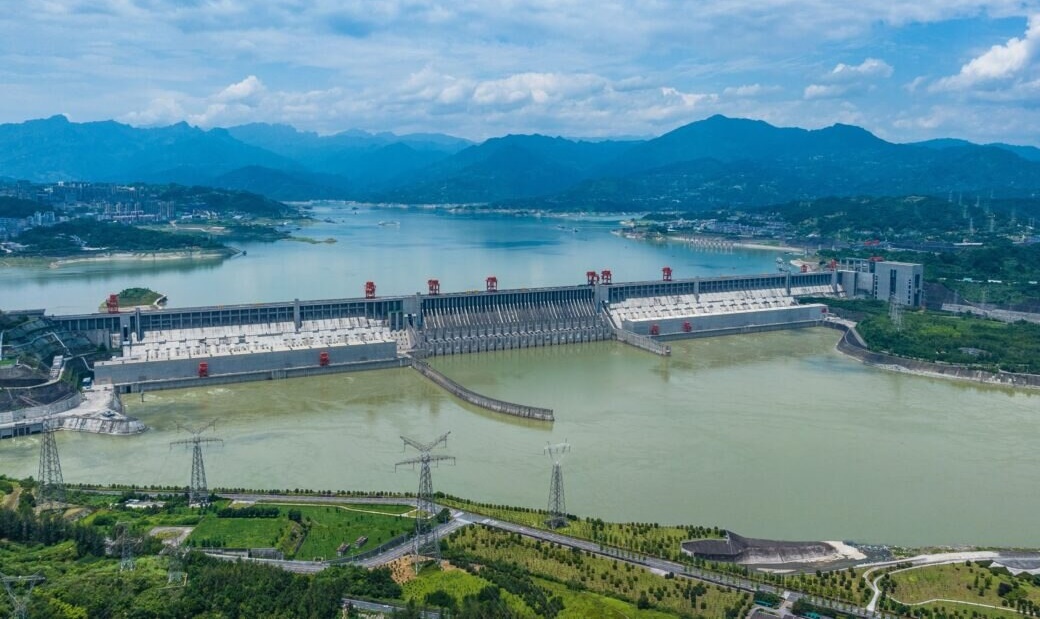Three Gorges Dam: China’s insane mega-project
The Three Gorges Dam in China is probably one of the most controversial construction projects in human history.

On the one hand, it produces unimaginable amounts of electricity, supplying the huge country with energy. But on the other hand, it has literally destroyed the lives of millions of people. And is now even responsible for more environmental disasters than it was originally intended to prevent.
West of the city of Yichang in China’s Hubei Province there is a mega-structure unlike any other in the world. Hailed by some as an engineering marvel, the Three Gorges Dam is viewed by many others as a massive environmental threat. Not only that, but its construction also brought suffering to millions of people. Even though it produces unimaginable amounts of electricity each year, critics doubted its usefulness long before it was actually built. Since it was inaugurated in 2006, it has become increasingly clear that they were probably right on some serious points.
However, just the bare numbers surrounding the Three Gorges Dam are absolutely awe-inspiring. Its dam is 2,335 meters long and up to 185 meters high and, according to “Encyclopedia Britannica”, consists of 28 million cubic meters of concrete and 463,000 metric tons of steel. Its huge reservoir, more than 600 kilometers long, can hold up to 22 billion cubic meters of water. According to CNN, that would be enough to fill nine million Olympic-sized swimming pools. Its 32 turbines have a combined capacity of 22.5 million kilowatts.
More than a million displaced people
With a production of well over 100,000 kilowatt hours per year, the Three Gorges Dam is the most effective hydroelectric power plant in the world. To achieve a comparable output, for example, around 50 million tonnes of brown coal would have to be burned over the same period. The dam’s output is therefore as large as that of several highly effective nuclear power plants combined. Thanks to him, heavy freighters can now travel several thousand kilometers inland directly from the port city of Shanghai to Chongqing. But this supposed progress, this technical miracle, came at a very high price.
According to estimates, up to 1.5 million people lost their homes so that the Three Gorges Dam could be built. Two cities, 114 villages and 1,680 towns along the once fertile banks of the Yangtze River, which the dam dammed, gradually disappeared. They either had to make room for the mega-project or drown in its floods. Countless people who have been forced to relocate have complained about massively deteriorated living conditions since the dam went into operation in 2006. Even Chinese studies by the Chinese Academy of Sciences come to the conclusion that the income of such displaced people has reduced on average by up to 20 percent. In addition, many funds that were actually intended to help the dam victims were lost in opaque sources.
Does the dam cause flooding?
Much worse, however, is the accusation that the project does not fulfill its original purpose. The Chinese government once promised its people that the Three Gorges Dam could prevent floods with its enormous storage capacity. Communities and entire regions that are literally below this should benefit from it. The Yangste, the third largest river in the entire world by volume, regularly overflows its banks during the Chinese rainy season. The problem is that the dam not only fails to deliver on that promise, but is likely to cause even more flooding. And these are not the only natural disasters for which experts blame him.
But first, back to the floods. As already described, the Three Gorges Dam can hold an incredible amount of up to 22 billion cubic meters of water. The only problem is that during a flood period caused by particularly heavy rainfall, more than ten times as much can occur within two months. An amount of water approximately twice the volume of the entire Dead Sea. And of course it has to go somewhere, so the excess water is released in a “controlled” manner into the regions at the foot of the dam. In 2020, according to CNN, this led to historically unprecedented flood levels being reached in some affected areas.
Three Gorges Dam / Landslides and earthquakes
And this in a country where regular dam failures and floods have already cost the lives of hundreds of thousands of people. Nevertheless, no other country in the world has as many large dams as China. There are currently more than 20,000. But in addition to the floods, landslides and earthquakes have also increased in the region since the Three Gorges Dam went into operation. The problem: The massive weight of the water has long since begun to erode the banks of the Yangtze. The Chinese government was forced to openly admit this fact as early as 2007 due to the obvious and accumulating events.
The constantly changing water level in the Three Gorges Dam also constantly changes the pressure on the rock, which further promotes erosion. And so, in 2003, when the dam’s water reservoir filled for the first time, a catastrophe occurred when a whole piece of a mountain simply broke off. 24 people lost their lives and almost 350 houses were destroyed. Another problem: The mega-power plant is located near two so-called fault lines. A region in which earthquakes can occur more frequently. And that’s exactly what happened, again due to the weight of the water and the associated impact, which extends to the tectonic plates in the earth.
Prestige government project
Expressed in bare numbers: From 2003 to 2009, a total of 3,429 earthquakes were measured along the reservoir of the Three Gorges Dam. In the period from 2000 to 2003 there were just 94. In addition, massive erosion also occurs below the dam because the sediment carried by the Yangtze can no longer be deposited in the affected regions. Instead, it accumulates on the dam walls and ensures that the reservoir cannot hold its maximum capacity of water. Eventually, around 80 massive cracks were discovered in the dam wall in 2003, which of course fueled discussions about its safety.
To understand why China still wanted such a Pandora’s box, one has to look back in time. A good 100 years ago, more precisely in 1919, the statesman Sun Yat-sen envisioned a huge dam to dam the mighty Yangtze. He dreamed of hydroelectric power supplying the entire country. And even created concrete blueprints. But it was not until the 1940s that his successor Chiang Kai-shek took his ideas further. Among others, he invited the American engineer John L. Savage to China. He oversaw the construction of the legendary Hoover Dam in the USA. He even sent local engineers to America, but due to the Chinese Civil War, which raged until 1949, the project was put on hold.
Act of rebellion
Mao Zedong and other Chinese leaders also dreamed of the Three Gorges Dam. But it would take until 1992 for the plan to take concrete shape. The then Prime Minister Li Peng had the Chinese parliament vote on it. What was remarkable was that a third of MPs clearly spoke out against the construction. In China, which is normally loyal to the regime, this is an almost unheard-of act of rebellion. There were also complaints from numerous parties involved that they had not been informed in any way in advance about the situation and the technical details of the construction. Above all, people were concerned at the time about the consequences for the 1.4 million displaced people. In other words, more people than had lost their homes combined during the construction of China’s three largest dams to date.
Nevertheless, the dam was built from 1994 to 2006, and in 2012 it reached its current full capacity for the first time. Today it is still the largest hydroelectric power station on the entire planet. And a chilling example of how close genius and madness often lie in such mega-projects. To this day, many believe that the costs of the Three Gorges Dam to people and the environment have far outweighed its benefits. And as a result of climate change, these problems, which are already drastic, are likely to become even more severe. So China had better quickly start looking for a solution to tomorrow’s problems that their beloved prestige project is already causing today.
For the first time in decades: China reports population decline


